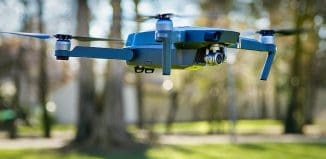Agro-Terror: How to Protect Against Agricultural Pests
This post is also available in:  עברית (Hebrew)
עברית (Hebrew)
 It’s all the Red Palm Weevil’s fault, a pest inhabiting palm trees and occasionally causing their death. Reports from all over the world, including the U.S. and Israel, mention falling palm trees or trees that have to be uprooted, after the red palm weevil did its work.
It’s all the Red Palm Weevil’s fault, a pest inhabiting palm trees and occasionally causing their death. Reports from all over the world, including the U.S. and Israel, mention falling palm trees or trees that have to be uprooted, after the red palm weevil did its work.
Dr. Freddy Pachys developed a solution for identifying the weevil and other pests, based on x-ray scanning and software. His solution can scan infected palm trees – as well as incoming or outgoing agricultural produce – without touching the scanned objects. Harmful pests infecting produce while in transfer, such as the red palm weevil and others, are a serious economic threat. Early identification of pests using this sort of system will help protect countries against agricultural terror attacks.
Dr. Pachys is a senior researcher in the FIRST group, a part of the Institute of Terrorism Research and Response (ITTR). The multi-disciplinary group conducts research on decision making and the impact of future technologies on society.
Many anti-terror agencies around the world are concerned about attempts to poison populations by introducing pests into agricultural produce, in order to cause economic harm to countries by damaging incoming or outgoing agricultural products. The need to identify these threats exists for all types of agricultural products, in order to detect pests infecting flowers, fruits and vegetables.
Agricultural terrorism is a growing trend among extremists worldwide, and evidence points to terrorist organizations viewing food supplies as an attractive target. The food supply chain is extremely vulnerable to these threats, and many security agencies are aware of the fact. It’s not a new phenomena, either: The U.S. Army discovered U.S. Department of Agriculture documents in a 2002 raid on Al Qaeda in Afghanistan. Al Qaeda instruction manuals were included, with instructions involving attacking agricultural targets.
IHLS – Israel Homeland Security
The most common definition of agro-terror is: “The willful infection of animals with diseases or the introduction of pests to plants or agricultural products, in order to damage economies and destabilize societies” The threat existed before modern times: The ancient Assyrians poisoned their enemy’s food, for example. German agents operating in the U.S. during World War II infected horse and cattle shipments about to be sent to France over the Atlantic.
Dr. Freddy Pachys is an expert on technology with a background in electronics, who was especially attracted to the field of agricultural pests detection. He developed a system that can detect pests inside containers, boxes and tree trunks, without touching the scanned object and without opening any produce containers. Dr. Pachys hopes that new scanning and detection devices would be based on his software, which is itself based on principles used by cargo scanners in naval ports and airports. The device would be able to detect a worm just a few milometers across. According to the inventor there’s no other system like it in the world, and he succeeded in getting it patented in the U.S., with the European patenting process near completion as well. The concept was presented to experts abroad and in the Volcani Center in Israel. Now he expects the technology to be adopted by a manufacturer, who will then create the first prototype.
According to Dr. Pachys agricultural terror poses a threat to many countries, and several incidents were already recorded. Naval ports are, of course, vulnerable points, as agricultural produce is transferred there from country to country. Pests cause billions of dollars in damages to the global agriculture industry, especially during these transfer phases. “Modern pest detection is relatively primitive,” says Pachys. “They check the produce using pocket knives and magnifying glasses.” He developed a software that can differentiate between the agricultural produce and the pests, analyze images and finally pinpoint the location of the pests. “Any organism detected inside an agricultural produce container is a pest, since obviously there shouldn’t be any pests at all. The goal is to have zero pests living within the produce. All agricultural products have to be totally free of any insects and other foreign bodies, and that’s why it’s so important to be able to detect them.”






























